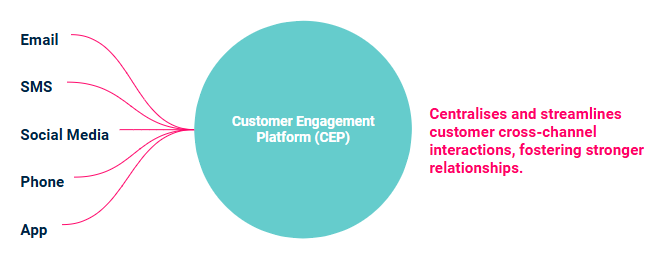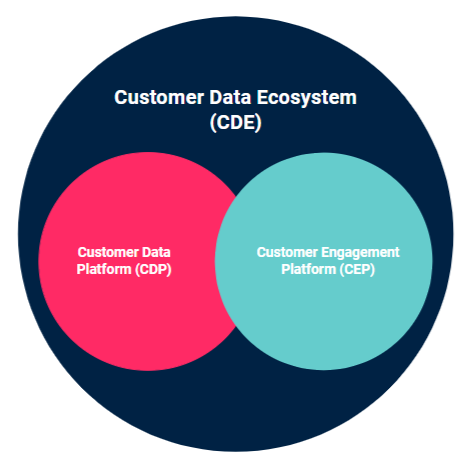Today’s businesses face the challenge of building personalised connections with customers across multiple channels. A Customer Engagement Platform (CEP) is designed to simplify this by centralising and streamlining customer interactions, creating consistency and fostering stronger relationships. By unifying data and facilitating real-time engagement, CEPs enable companies to deliver tailored, impactful experiences that build loyalty and drive growth.
A CEP is a software solution that consolidates customer interactions across channels – such as email, SMS, social media, and in-app messaging – and personalises these experiences using customer data. The platform’s goal is to enable personalised, timely interactions across all touchpoints, enhancing customer satisfaction and ensuring a seamless, unified experience.

Key Features of a Customer Engagement Platform
Understanding the essential functionalities of a CEP sheds light on its ability to improve customer engagement.
Data Integration and Centralisation
A CEP integrates data from various sources into a single view of the customer. By centralising data from CRM systems, websites, and social media, a CEP provides insights into each customer’s history and preferences, enabling more relevant, impactful interactions.
Personalisation and Segmentation
With a centralised database, a CEP allows businesses to segment audiences and tailor messages to individual needs. This level of personalisation aligns messaging with customer preferences, increasing satisfaction and boosting conversion rates by ensuring that the right content reaches the right people.
Omnichannel Engagement
CEPs support engagement across multiple channels, from email to mobile apps, creating a cohesive customer experience. This consistency strengthens relationships, allowing customers to interact with a brand seamlessly on their preferred platforms.
Automation and Workflow Management
Automation tools within CEPs streamline tasks like follow-ups and reminders, saving time and resources while ensuring timely communication. This improves operational efficiency and enhances customer satisfaction through timely and relevant interactions.
Analytics and Reporting
CEPs provide valuable insights into engagement activities, tracking metrics like open and click-through rates. These real-time analytics allow companies to optimise their strategies, ensuring continuous improvement in engagement efforts.
Benefits of Implementing a Customer Engagement Platform
CEPs provide a range of strategic benefits, from enhancing customer satisfaction to maximising ROI.

Leveraging Both a CDP and CEP: Understanding the Differences and How They Work Together
While Customer Data Platforms (CDPs) and Customer Engagement Platforms (CEPs) may seem similar at first glance, they serve distinct functions within a company’s technology stack. The primary purpose of a CDP is to unify data from various sources, creating a comprehensive view of each customer that aids in analysis and decision-making, also being used for direct customer activation. In contrast, a CEP focuses on leveraging this data—often sourced from a CDP—to engage customers across multiple channels with timely and relevant interactions.
CDPs and CEPs work together to optimise customer experiences and are integral components of a broader Customer Data Ecosystem (CDE), an interconnected network of data sources, processes & technologies that contribute to collection, unification, segmentation and activation of customer data.

A CDP consolidates and unifies customer data, creating a solid foundation that a CEP leverages to deliver real-time, personalised interactions. By integrating these platforms, businesses can offer seamless, data-driven customer journeys that enhance satisfaction and loyalty.
While CEPs focus on driving customer engagement, CDPs provide the critical data infrastructure needed to enrich these efforts. Leveraging both within a CDE framework enables companies to deliver more meaningful and scalable personalised experiences, ultimately strengthening customer relationships.
In essence, it’s essential for businesses to deliver seamless and personalised experiences across channels to keep customers engaged. Achieving this level of engagement can be challenging; therefore, consolidating a well-structured Customer Data Ecosystem (CDE), with robust CDPs and CEPs, is crucial. Partnering with experts in the field, such as Artefact, help companies navigate their options, implement the best solutions for their business needs, and accelerate the unlocking of the full potential of these platforms and their customer relationships.

 BLOG
BLOG







